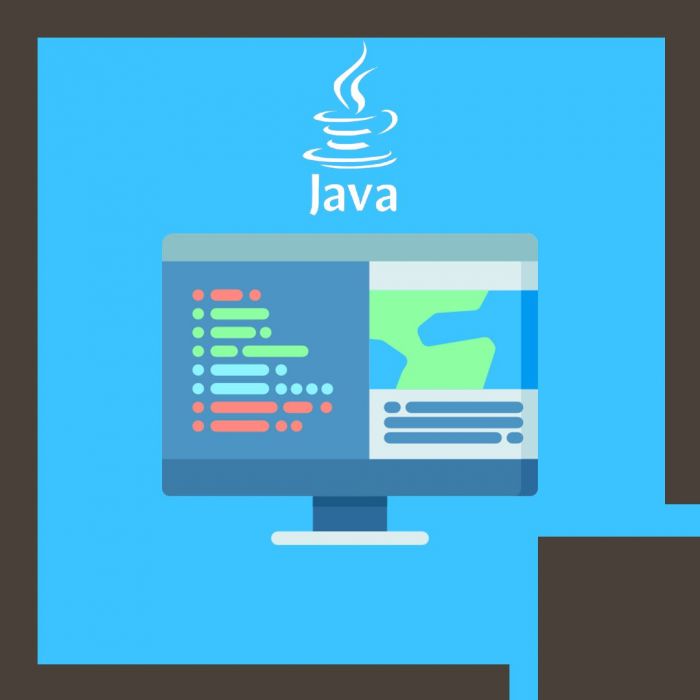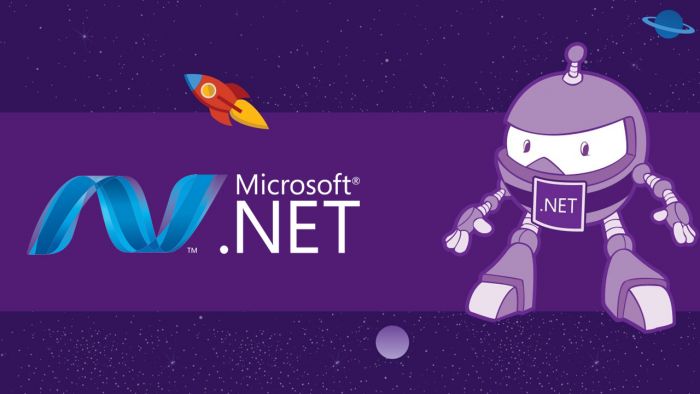
Top Coding Trends to Follow in 2021
I think we all understand that the whole world working on code. Just look at your surroundings and realize.
Computers don't have their minds yet, but coding helps them run. Only according to the instructions programmed into them may they function. There are practically no code-untouched businesses and social events. By code, our society is portrayed and mirrored. The code reflects our social norms. The environment that we want to develop is based on code. You're currently viewing this blog post in Firefox or Chrome, maybe even on your work machine with Internet Explorer, running Windows or OS X, on a laptop or tablet. You usually spend several hours a week checking email, viewing your friends' status on Facebook, or watching Netflix movies and shows. Your whole life runs on coding.
You normally have a smartphone in your bag, pocket, or on a bench nearby. More than billions of individuals now have smart-phones. You almost certainly have one if you're reading this. They are the most common forms of connectivity. You can access a GPS, a camera, a touchscreen, and countless apps on this device.
Health Documents? In a federal archive. Resume? LinkedIn, Seek, and CareerOne maybe. You use Facebook and Google to advertise your products if you are operating a firm, and a CRM such as Salesforce or Hubspot to track them. For ordering items, you use Amazon. You pay your taxes electronically, handle your bank account online, even in digital currency, maybe even dabble. Yeah, Bitcoins, anybody?
Modern cars are software-driven, designed by robotics in factories, and chock full of computers. Did you know that your dashboard sends directions via mini-computers to the rest of the car? Also, cars are not as mechanical as they once were. They have GPS tracking devices, reverse sensors... also software that works in a central locking system.
If you use a car, you can navigate your way around using Google Maps, Yelp to find a spot to dine, or TripAdvisor to locate a spot to stay. With MenuLog, you could also order food, timed perfectly to welcome you upon your arrival home.
Look up now. The autopilot-controlled plane has entertainment systems and in-flight Wi-Fi and is actively connecting with other airplanes, its manufacturer, traffic controllers, and can fly somewhere over you. Space stations and Satellites circle the earth somewhere beyond that, monitoring the climate, taking photos, and routing calls to mobile.
The year before, this planet was in a panic, and due to the pandemic, the business community had so many problems. I observed that many market industries were struggling to survive and that others were struggling to succeed. However, demand for the IT sector has been rising every day. I am focusing my "predictions" this year on wider technological developments that I highly suggest that you work on whether you are a frontend, backend, or full-stack developer. So here we go!

Introduction to Programming & Coding | Java Basics for Non-Developers (TTCODE101-J)
Virtual ClassroomThis course is a beginner level course for students who are interested in diving into java development.
Learn To CodeFast Creation of Application: Low Code/No-Code can extend
In terms of supply and demand for software developers, rapid digital development produces an immense gap. While more and more new professionals are entering the industry, it still isn't enough. The Low Code/No Code initiative has been gathering momentum in recent years.
There are several low-code/no-code systems on the market, including Bubble, mainly in web development. In many other fields, their progress paved the way for LCNC development: No Code AI, No-Code App Development, No Code Machine Learning. As written here, LCNC instruments will improve companies or people with brilliant ideas:
The Public Cloud vendors, as I expected last year, also provide CNC services. Google offers AppSheet, Microsoft offers Power Applications, and AWS offers Honeycode to create apps easily as an LCNC platform. In 2021, with lots of developments, mergers, and acquisitions, LCNC will be one of the fiercely contested zones. If you are an individual or institution with an excellent concept, look out for LCNC in 2021.
ECMAScript Modules
ECMAScript modules get a lot of action since node modules and folks more commonly dislike npm. I'm having this. The directory for node modules can be ginormous.
By the way, if you notice your disc filling up in your home directory from running npx npkill, it can find and optionally uninstall all the node modules directories. In reality, ECMAScript modules are native to and have been for a while, the browser. You can utilize insert statements natively in the code to put in ECMAScript modules if you add type="module" to the script name. And with Deno, the same thing works and even drives Vite's famous framework to bootstrap Vue applications.
This could be something we find less in production and more in development, so there are efficiency issues regarding the number of HTTP requests to import the code to the page. Yet this is something you can check out at least once in 2021, no matter what. Give Deno a try.
Typescript
Right now, if you're writing JavaScript and you haven't grasped Typescript, it's a suitable time (even maybe a little past time). If you had been looking for a winner in the debate on Typescript, JSDoc, Flow, the examples that Typescript won are out there. The large open source tasks are already coded in Typescript, and large commercial projects are either in it or heading to it from my experience. Angular is the out-of-the-box Typescript.
IMHO, taking a current JavaScript project you are already familiar with, maybe a small side project you have been working on, or a proof of concept at work, is the perfect way to get into Typescript and port it Typescript. This would give you experience with the tooling and syntax without trying to tackle new programming issues at the same time as well. In the Conversion to Typescript sequence, this is how I do it. We'll take some fairly basic JavaScript code and port it step-by-step to Typescript.
Typescript will be the most of my Blue Collar Coder videos in 2021, and I will practice it all year long. Seriously, you all, if you accept one aspect away from reading this, it's this: Typescript learning. Jobs that mention Typescript in 2021 as "nice to have" would need it in 2022.
WebAssembly
WebAssembly has progressed from a joke concept (at least to me) to a quite real world, especially with the launch of the Blazor platform from Microsoft that makes it simple to build web applications using C# in a Vue-like format, but with WebAssembly code rather than JavaScript being the compiled output. It's an excellent structure on the Blue Collar Coder platform that I've explored.
It's not only Microsoft, but it's also open-source. You can now use your Typescript abilities (yes, again, another explanation to study Typescript) and use them with AssemblyScript to be using a familiar syntax to create WebAssembly code. That became the sort of stuff you could do with Rust or Go, and now it's also Typescript!
If you are in the space of B2B, in the form of business that used to use Macromedia's Flex, or someone who uses ASP on the Microsoft stack, this year you will want to invest in learning WebAssembly program at some stage. When designing a web application, the first thing that must not be ignored is efficiency. JavaScript constraints now make it slow for heavy calculations. This dramatically worsens the user experience.
This is one of the main factors for WebAssembly's growing success. With this innovation, code can be converted into bytecode, which runs in a browser in any programming language.
WebAssembly is an open format that specifies, for executable programs, the portable binary code format and the corresponding language of the text assembly and interfaces to facilitate interactions between such programs and their host system.
Benefits:
- It is independent of the platform and programming language.
- Quickly executes code
- Hardware independent
- It gives a good value of the security.
All runs counter to the triangle: small footprint, scripting across platforms, and pace. In modern web creation, all three of these components are the best thing. This is why today, there isn't the lion's share of web creation cases without WebAssembly.
Micro-State Managers
Even before React hooks came along, Redux was losing mindshare already. There's so much boilerplate. The Redux Sagas wound up getting the code complicated and complex to execute. Then we had hooks in 2018, and the worldwide state went from being the threat to becoming a long-lost partner. It would be good if the tale stopped there, but the fact is that while great, useContext and useState have efficiency problems in broad React trees because everything has to be changed on a value shift from the provider down.
This suggests that you would need some control solution if you have a state shared in multiple parts of the React tree. The Redux's Retaliation, then? Scarcely. There are plenty of new, fantastic micro-state manager choices out there that will offer you a global state with no headaches near Redux. Valtio, Recoil, Jotai, and Zustand are some examples.
On my channel, I have covered a lot of these. And in your project, you can check it out or check one of my samples to get a sense of how much smoother these micro-state executives can be and bring you many ideas and concepts for the next moment you want global state management. Bonus extra: XState is a very cool state-machine-based alternative state management method. If you have projects with unique UI states or server states, it's fascinating that it functions there too. It also has a pretty nice state visualizer that is worth the entry price all by itself.
Continuous Integration and Deployment
We live in the modern age, where speed and consistency play a brutal role in every industry and sector, and the field of web development is also no different. In reality, providing speedy, smooth, and upgraded services is the top priority in web development.
The pace of frequent bug fixes, upgrades, UI/UX enhancements, etc., makes your website responsible and user-friendly. Most modern systems need code creation on multiple technologies and resources, and the team requires a framework to implement and test the modifications. This impacts your overall business. Thus, in the web world, continuous integration and deployment are essential. The method of checking each improvement made to your codebase automatically and as early as possible is Continuous Integration. Continuous Deployment incorporates the checks that exist during Continuous Integration and moves modifications to a manufacturing or staging system. Continuous delivery ensures applications go into development for extensive testing, and they are automatically upgraded by continuous deployment.
Advantages:
- Smaller improvements to the coding are smoother (more atomic)
- Via fast feature launch, the product develops rapidly.
- Isolation of faults is easier and faster.
- Due to the smaller code updates and faster fault isolation, Meantime to Resolution (MTTR) is shorter.
- Elapsed time is shorter for a quicker release rate to track and correct output escapes.
- Because of the smaller, particular updates, testability increases, these smaller modifications make for positive and negative checks that are more detailed.
- No wonder more development and manufacturing firms can adopt this strategy in their work with certain benefits since it is the most important web creation element in the world.
Micro-Frontends
For Micro-Frontends in 2021, there are two key use cases I see:
Reuse between Micro-Site apps - Micro-Frontends are a perfect workaround for that if you have split your monolithic app into many micro-sites and you are confusing yourself with npm sharing.
Widgets - Micro-Frontends from the 2000s are simply widgets. Micro-Frontends are the place to do that if you want to get some bundled code that your consumers will use to insert some UI with your data on their website.
Module Federation, a recent functionality in Webpack 5, is the simplest way to render Micro-Frontends. You can show code (and its constraints) from an application using Module Federation without eliminating it from the application or making some wrapper code. You only show it from one program and then, using import statements, consume it in another. It's as simple as that. What's much cooler is that every technology recipient can also upgrade automatically as the program exposes the component updates. That means exchanging live code within your web or between you and your clients.
Zack Jackson and I have researched how to use this new Webpack functionality in your application, Functional Module Federation, that you can read and understand. And there is an entire playlist devoted to the Module Federation on the Blue Collar Coder channel.
Monorepos
Monorepos don't go somewhere soon. They love them or dislike them. That's because the node environment's design enables the development and use of smaller packages that function in tandem instead of monolithic programs. And Monorepos makes it simpler for a collection of similar libraries to be created. Yarn workstations made Monorepos a lot smoother, and now they are still supported by npm@7. This ensures that support for Monorepos is built into our development tool for package management. You can layer Lerna to add package versioning functions on top of that. You should spend some time studying workspaces if you are going to be coding in a technical environment and make sure you know how to connect libraries so that you get live updates during production.
GraphQL
GraphQL has just turned 5! Could you imagine that? You might now argue that, by now, GraphQL could have taken over. But we have used XML as the data exchange format instead of JSON for five years in the "architectural style" of REST (it's not a standard).
In 2020, the GraphQL ecosystem had a fantastic year, and in 2021 it is poised to have an even better one. Any highlights include the Hasura server that, with the touch of a button, can place a GraphQL API on any RDMS. The Graphql/nexus library published this year makes it much easier to create code and output form bindings for Typescript (yet another example to understand Typescript). You can select an API from this list and give it a whirl if you want to check out GraphQL yourself right now. Here's a nice weather API where you can freely run queries, no codes, no keys, give it a shot. Beginning early next year, the Blue Collar Coder channel will have a complete tip-to-tail GraphQL sequence that will take you from learning about what GraphQL is and how it integrates into anything into your initial query and through creating your private server and using useful capabilities such as subscriptions.
Utility First CSS
I think there's a strong discussion to be had on whether it makes a lot of sense to tackle a CSS library that has a class per selector and one thing is clear, the very first Tailwind, CSS library utility, is famous worldwide, and here to remain. I recommend a video I just published on the use of Twin. Macro to get started with Tailwind, which is a very simple way to customize a CRA (Create React Application) to use Tailwind effectively. It will give you a perfect starting point to pursue your study of this interesting styling and layout approach. Try Chakra-UI if you're looking for something close to Tailwind, except that's a little more React-Centric. All you have to do to apply a margin to the top of a box in Chakra is <Box mt = {3}>...</Box>, and it adds a good margin to the top, so tweaking the style is as easy as inserting properties.
Web Performance
2020 was an enormous year for e-Commerce, and even though the quarantines (fingers crossed) lift, it would undoubtedly remain that way. Anyone with e-Commerce expertise recognizes that lower conversions mean more seconds, and lower conversions mean less revenue. So making the website to be faster is immense while still supporting the same collection of features.
In the e-Commerce or content room, you can make yourself invaluable to potential employers by learning, at least, how to do lazy loading and bundle splitting as well as learning what critical performance metrics you want to track.
Unified Tooling
The Node ecosystem is awesome, but since it's organically developed, and when we spend a lot of time just getting all the building instruments to fit together, it can be a headache. And so we see the rise of projects that have all-in-one toolchains to compile, run, lint, and evaluate JavaScript and Typescript JavaScript, such as Rome and Deno. Deno helps you to compile code into native executables now, too.
I recommend you try out Deno in 2021, at least, if you are a backend developer, to see what's up with ECMAScript modules and what it wants to work without node modules and organize to a native executable.
Conclusion
Ok, as we stated about coding trends in 2021 here, as they change so rapidly, it can be difficult to pursue them. Still, we're going to have to keep them in place and test them out. You will appease your customers with a world-class user interface, boost your web app performance, and enter new markets for your services by tracking the latest trends in coding design. You will be able to have an amazing experience for your web application users by using these patterns. You'll even raise the odds of being their first pick! Generally speaking, your interest is worth any code creation pattern. E.g., voice bots, IoT, MR, ETC, may continue for the next decade. However, most of them will be regular in just a few months. Coding boot camps also provide useful knowledge to develop efficient coding.
So, please don't wait to start applying them as soon as possible for your next project. Tell us your favorite one, and we'd love to know if we skipped any here. Happy evolution.

